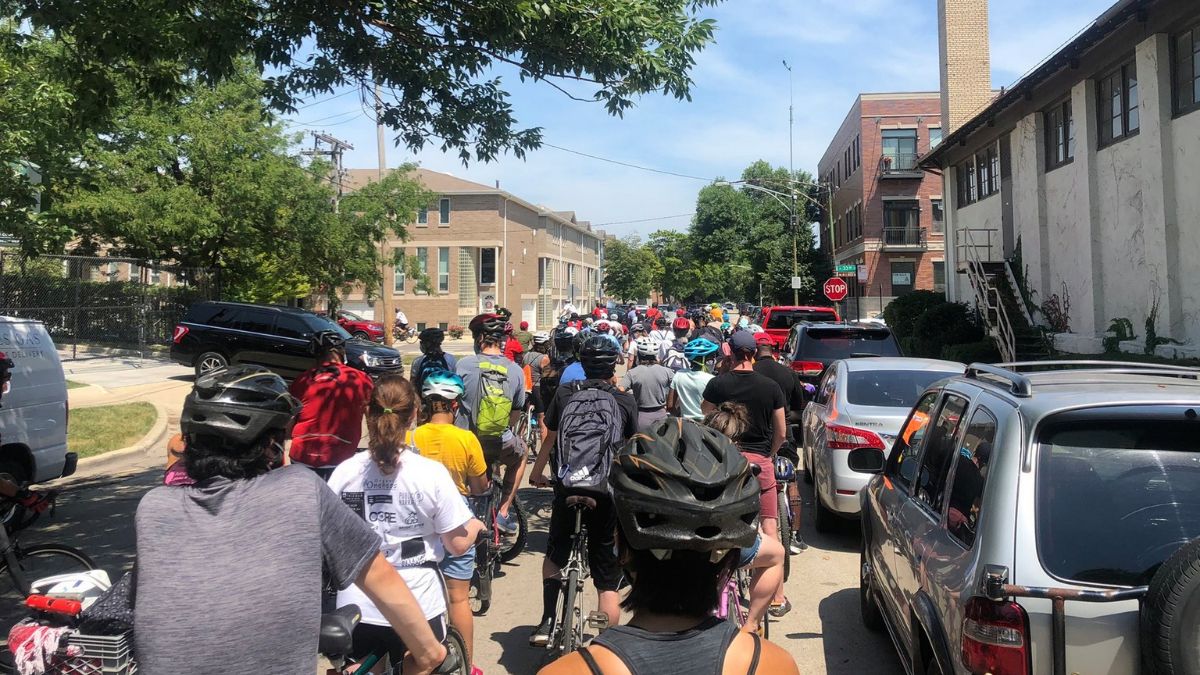This Saturday, a group of participants will go on a tour that revisits the Chicago Race Riot of 1919, the single worst incident of racial violence in the city’s history.
This two-hour bike and trolley tour, hosted by the Chicago Race Riot of 1919 Commemoration Project, will commence through the historic Bronzeville and Bridgeport neighborhoods on the Southside.
Yet, this tour is more than just an exercise in historical recollection.
Instead, it’s an exploration of how the riot, which claimed 38 lives, left 537 people injured and thousands homeless, led to the creation of structures that intentionally isolated Black Chicagoans.
“For us initially, it began as a way to uplift this history that we consider the origin story for segregation in Chicago,” said Franklin N. Cosey-Gay.
Peter Cole and Cosey-Gay, co-directors of The CRR19 Commemoration Project, designed the nine-stop bike and trolley tour. CRR19 is also supported by Organic Oneness, a Bronzeville-based social justice organization led by Syda Taylor, who also helped plan Saturday’s event.

The tour is part of a public art project where CRR19 commissioned Firebird Community Arts to develop 38 permanent glass markers around Chicago to memorialize the lives lost to the riots.
Cole got the idea for the markers from visiting Germany, where he saw stumbling stones placed at sites to honor Holocaust victims. He founded CRR19 in 2019, the year that marked the 100th anniversary of the Chicago Race Riot of 1919.
In the same vein, Cole and Cosey-Gay aim to help the public become more aware of the race riot and its impact on local history.
“We commemorate this anniversary because it’s important in its own right,” said Cole, “But, through the tour, educate people about 1919.”
How the Chicago Race Riot of 1919 Began

The most racially violent series of events occurred in Chicago when a 17-year-old young Black male named Eugene Williams got on a raft with friends in Lake Michigan to escape the searing Summer heat.
But the raft they were on ventured past an invisible line, near the White part of the water near 29th Street beach. That’s when, according to witnesses, a 24-year-old White man named George Stauber hurled stones at them, causing Williams to fall out of that raft and drown.
The first police officer refused to arrest Stauber over the incident.
Subsequently, Williams’ death triggered a full-scale race riot that began on July 27 and ended on August 3, 1919. It was one of 25 racial conflicts that occurred nationwide, dubbed the Red Summer of 1919.
Whites perpetrated these acts of racial violence to enforce dominance and control over Blacks, especially those who came to Chicago to escape the racism of the South.
While the legacy of the Chicago Race Riots is residential segregation, the violence once used to enforce racial boundaries between communities became policies and institutions.
“Restrictive covenants were implemented instead by the real estate industry in the 30s, reinforced through redlining in the 50s, reinforced through white flight and housing and suburbanization,” Cole said.
The vacant lots and empty buildings, says Cosey-Gay, are also legacies of the Chicago race Riots.
“When you’re on the south and west sides of Chicago, you don’t have to go very far to see empty lots, to see homes in disrepair,” Cosey-Gay said.
“They’re emblematic of the wealth gap between Black and White Chicago,” he said. “The story of the race riots is an origin story connected to that.”
A Tour of Resistance and Resilience

The CRR19 bike and trolley tour isn’t “simply a tour of places where harm happened,” said Cosey-Gay.
The tour will highlight the people and sites connected to the riots. Yet, it will also feature the institutions linked to Black resistance and resilience that sprung up after that tragic incident. Tour stops include The Light of Truth Ida B. Wells National Monument and the Victory Monument landmarks.
“I want to highlight the word resistance too,” said Cosey-Gay, about one of the tour’s themes.
“Resilience is great,” he said, “But yeah, resistance is about, ‘No, I’m not gonna allow you to beat me down from the beginning.'”
“So we want to highlight both of those,” he said.
For More Information
What: The 5th Annual CRR19 Historic Bike Tour (A Trolley will also be provided for non-bike riders)
When: Saturday, July 22, from 10 a.m. to 1 p.m. (Check-in starts at 9:15 a.m.)
Where: Parking lot on 35th and State Street
More Info: The event is free with an option for donations. All donations of $30 or more will receive a Chicago Race Riot 1919 shirt at the check-in table. After the tour, there will be free lunch, music and an opportunity to engage with local organizations and resource tables.
For more information on The 5th Annual CRR19 Historic Bike Tour, visit chicagoraceriot.org. To register for Saturday’s tour, see this link.



